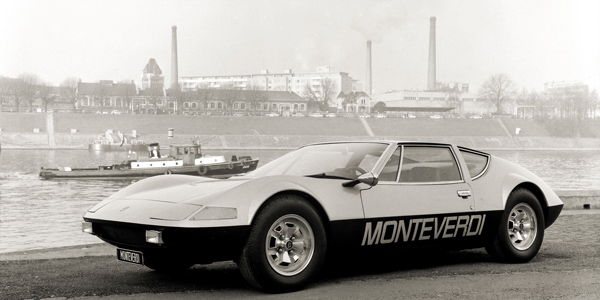
A nostalgic and celebratory look back at one hundred years of passenger flight, featuring full-color reproductions of route maps and posters from the world’s most iconic airlines, from the author of bestselling cult classic Transit Maps of the World.
In this gorgeously illustrated collection of airline route maps, Mark Ovenden and Maxwell Roberts look to the skies and transport readers to another time. Hundreds of images span a century of passenger flight, from the rudimentary trajectory of routes to the most intricately detailed birds-eye views of the land to be flown over. Advertisements for the first scheduled commercial passenger flights featured only a few destinations, with stunning views of the countryside and graphics of biplanes. As aviation took off, speed and mileage were trumpeted on bold posters featuring busy routes. Major airlines produced highly stylized illustrations of their global presence, establishing now-classic brands. With trendy and forward-looking designs, cartographers celebrated the coming together of different cultures and made the earth look ever smaller.
Eventually, fleets got bigger and routes multiplied, and graphic designers have found creative new ways to display huge amounts of information. Airline hubs bring their own cultural mark and advertise their plentiful destination options. Innovative maps depict our busy world with webs of overlapping routes and networks of low-cost city-to-city hopping. But though flying has become more commonplace, Ovenden and Roberts remind us that early air travel was a glamorous affair for good reason. Airline Maps is a celebration of graphic design, cartographic skills and clever marketing, and a visual feast that reminds us to enjoy the journey as much as the destination.
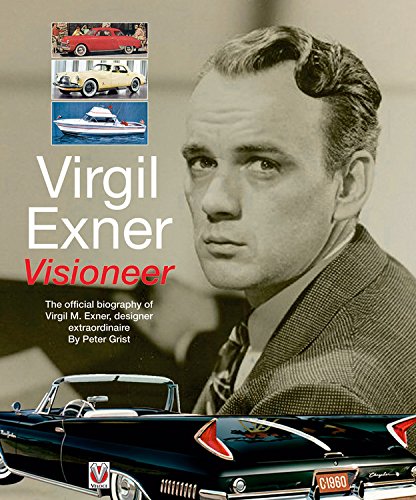
The story of a man that brought his own personal style to the world of industrial design, from automobiles to powerboats. Some 50 years after his design masterpieces wrested styling leadership away from General Motors – Harley Earl. Thirty four years after his untimely death, Virgil Exner’s name still remains inexorably linked to the Chrysler Corporation in the minds of car enthusiasts worldwide.
For an all too brief period, Exner’s name epitomised all that was great and exciting in America. His thrilling automobile designs from the mid-fifties took the world by storm and put Chrysler at the top. His work was nothing less than a revolution. Until the mid-fifties, engineers, creating cars that were reliable but invariably staid and conservative, had dominated auto design. Exner introduced to Chrysler, firstly with his ‘idea cars’ then with production models, vehicles that were wanted for their looks but at the same time, were soundly engineered; automobiles that carried classic proportions and gave the illusion of movement even whilst stationary. His design of the 1947 Studebaker established the design pattern for all modern cars and was a huge success. Along with automobile styling, his talents stretched to many other areas of industrial design, from trains to trucks and boats to Buicks.
This book gets behind the character of the man, his strengths and weaknesses, his personal tragedies and his vision of modern transport. Uncover why he set up in competition with Raymond Loewy, get the real facts behind historic inaccuracies and why he was made scapegoat for the sales disaster of the early sixties, Then delight in his fine artwork and his love of motor racing. With many previously unseen works of art and family photos among the 150 colour images throughout this is a unique and fascinating insight into a pivotal player in the development of the modern automobile.

Car photography often evokes the same recycled tropes. Predictably slick, hi-spec images on the front pages of glossy magazines, or huge blow-ups on giant billboards which have one designed aim: to sell a lifestyle. But our relationship with cars is so much more meaningful than these images might suggest. Like the camera, the car has changed the way we explore the world. With cars came road trips, and with road trips came some of the most important photographic documentaries of our time. A car is a vehicle not just for transport but for our hopes, desires and dreams. In Smoke and Mirrors, a selection of world-renowned and up-and-coming photographers come together to pay tribute to the car. From Nick Turpin’s images of ‘donut’ skid marks, Todd Hido’s painterly landscapes taken through wet windscreens and William Green’s shots of sleeping Tokyo taxi drivers, these photographs display cars at their most playful, introspective and meaningful, reminding us that there is more to them than just metal and machinery – for cars are emotionally intertwined with the lives we live.

How to Build a Motorcycle leads you through all the key stages – from initially finding the right project for your skill level, to sourcing a base bike and safely taking on some full-on bike-building tasks. With clear, easy-to-follow instructions, proper advice and specially commissioned step-by-step illustrations throughout it is an ideal aid to getting your hands oily. Written by Gary Inman, the co-founder of independent motorcycle magazine Sideburn, and illustrated by Adi Gilbert who is best known for his bicycle and motorcycle drawings whose clients include Harley-Davidson, Guy Martin, Wired magazine, Sideburn magazine and Nike, this is a must-have for all motorcycle lovers.
Read this book, even dip in and out where relevant. If it makes sense, schedule some time, clear your mind, pull on some old clothes, grab your toolbox and get going. The chapters in How to Build a Motorcycle will tell you how to complete a huge variety of tasks that will allow even the greenest of novices to get their hands dirty and start modifying with purpose. If you belong to this camp, start with some of the low-input, high-reward jobs, such as fitting bars, swapping the rear shocks or wiring in a new tail light. Even though these require relatively little work, they’ll transform the look of your bike, and completing them will fill you with confidence to undertake the more difficult jobs, such as fitting more modern front forks or even making your own frame.
The book comes with a glossy 32-page section on finished bikes and is a reference and the perfect gift for all fans, from those who merely like to tinker, to riders taking on a full build.

A fascinating plane-by-plane journey through aviation history, this beautifully illustrated book covers 365 of the most iconic aircraft in world history that enthusiasts, serious-minded hobbyists, and casual fans would love to fly if given the chance. Clear photography, historical context, and specs get you as close as possible to these planes without setting foot in a hangar.
Aviation has come a long way since the Wright Brothers built their glider in Kitty Hawk, North Carolina, in 1903. From among the thousands of different types of military and commercial aircraft constructed over the past 100 years, aviation expert Robert F. Dorr profiles the most important, fascinating, and famous aircraft ever made. Your opinions might differ, but you wouldn’t want to miss out on the planes Dorr identifies as flights of a lifetime.
While covering every era of aviation history, many of the planes in 365 Aircraft You Must Fly were flown during World War II, a time unmatched in aviation for its technological advances, romance, and clarity of purpose. During this golden age of flying, propellers gave way to jet engines, and the “Greatest Generation” fought gallantly in them.
Explore the history, thrills, and joy of flying the world’s most amazing 365 aircraft.
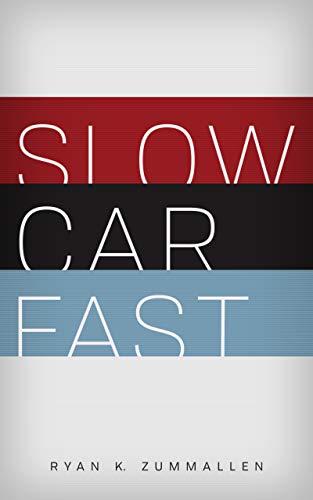
How did horsepower and speed get so out of control? Do young people still like cars? Who are the automotive icons that will shape car culture for years to come?
Slow Car Fast: The Millennial Mantra Changing Car Culture For Good offers answers to the questions on the mind of every kid who grew up with a poster on their wall and dreamed of owning their dream car one day, ferreted out through the first-hand reporting of veteran auto journalist Ryan ZumMallen.
ZumMallen goes inside the automotive zeitgeist to explain how modern car culture came to be, from the old-school (massive improvements in engineering and technology) to the new-school (the rise of video games and social media).
Featuring interviews with dozens of influential voices and ride-alongs in today’s automotive unicorns, Slow Car Fast is a must-have for anyone who knows that getting behind the wheel is only the beginning.
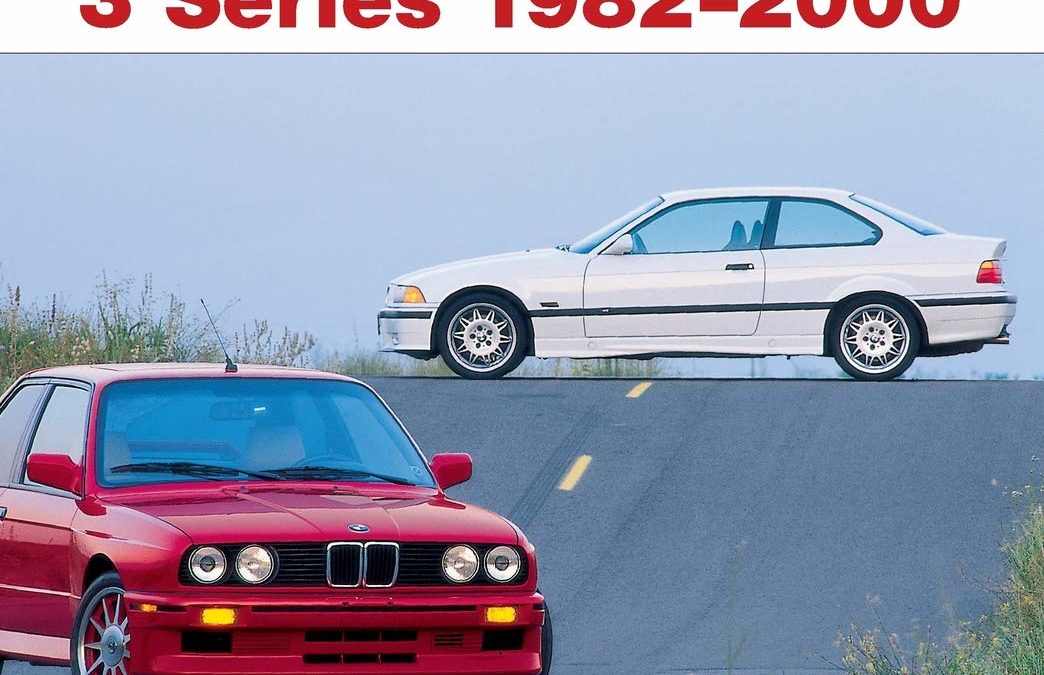
Since its introduction in 1975, the BMW 3-series has earned a reputation as one of the world’s greatest sports sedans. Unfortunately, it has also proven one of the more expensive to service and maintain. This book is dedicated to the legion of BMW 3-series owners who adore their cars and enjoy restoring, modifying, and maintaining them to perfection; its format allows more of these enthusiasts to get out into the garage and work on their BMWs-and in the process, to save a fortune.
Created with the weekend mechanic in mind, this extensively illustrated manual offers 101 projects that will help you modify, maintain, and enhance your BMW 3-series sports sedan. Focusing on the 1984-1999 E30 and E36 models, 101 Performance Projects for Your BMW 3-Series presents all the necessary information, covers all the pitfalls, and assesses all the costs associated with performing an expansive array of weekend projects.

Fully illustrated throughout, The Supercar Book is a sumptuously designed guide full of everything you could ever want to know about the best supercars on the planet.
From number-one bestselling author Martin Roach, The Supercar Book is a must-have for all boys and their dads (plus petrol-head girls and mums!) interested in fast cars.
With an introduction from F1 racing legend David Coulthard, as well as contributions from the biggest names in the field, this tour de force starts with the iconic 1954 Mercedes Gullwing and races through each respective decade of supercar history, showcasing the very best and most important vehicles in this scintillating species. Featuring the landmark 10 game-changers that have defined the genre and highlighting dozens and dozens of supreme supercars from the likes of Ferrari, Lamborghini, Bugatti, Pagani, McLaren and Porsche, get ready to be blown away by the beauty and power of these incredible vehicles.
With a pre-history of the genre plus an excursion into American muscle cars, this comprehensive book takes us underneath the bonnets and peels back the bodywork of these mind-blowing machines, as well as exploring how supercar technology has affected everyday cars.
The Supercar Book is a tour de force of the fastest, the most powerful and the most drop-dead gorgeous vehicles in supercar history. Jam-packed with almost 200 full-colour photographs, awe-inspiring statistics and exclusive interviews with supercar experts, and featuring every landmark star of the genre, this book is the ultimate guide for every supercar fanatic.

- A tribute to the Volkswagen Beetle, the most-loved car in the world
- Glorious photographs throughout
Beetle Love endures. It’s global and conquers every generation. And this love is classless. Never mind if used as a taxi on a daily basis, as a company car owned by a craft brewery in Ecuador, as a show piece in Great Britain or as a family heirloom in Indonesia: Beetle Love introduces them all. Convertibles and limousines, from red to rusty, from purple to polished. And it’s always the story that their owners lost their hearts to the Beetle. And rightly so! Hardly any other car arouses more emotions around the world.
All covered in this book, more than 20 stories, 208 pages, a wonderful and unique picture and story book.
Text in English and German.
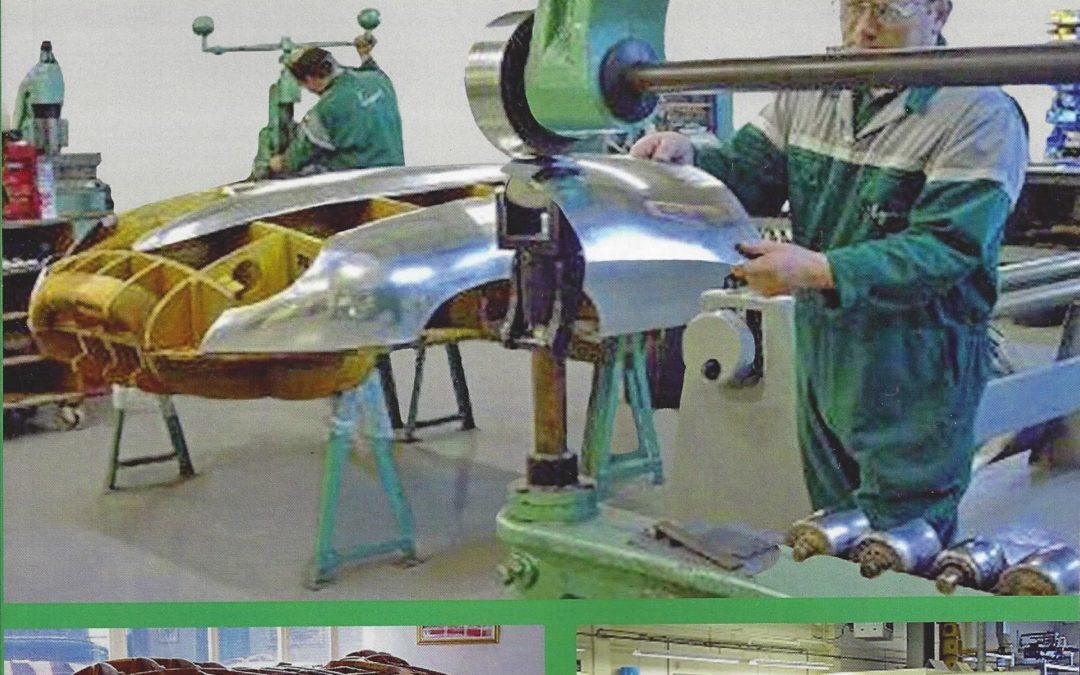
Metalshaping – Volumes 1 & 2 The secrets of shaping sheet metal are revealed, from the first car to current day and beyond. A four-year effort with over 500 contributors from around the world. Research includes the first patents, the first ads, and a breakdown of machinery models. Mind-blowing introduction to suppressed technology and to future-tech. Loads of photo instruction with full contact lists.
Book #2 Three chapters cover the in-depth history of English Wheels with original patents and ads. Two chapters cover “Fender Smoothers,” which evolved into pneumatic planishers and bulls-eye picks, and how WWII changed their development. One chapter covers secretive “Crowning Machines,” which most readers have never heard of. An Auburn boat-tail body section is made from scratch.

The Good, the Mad and the Ugly … Not to Mention Jeremy Clarkson takes a light-hearted look at what the author considers to have been the golden age of motoring journalism, during the last two decades of the 20th century. As a writer for Motor magazine, founding editor of Fast Lane magazine, and a freelance journalist with a weekly column in The Daily Telegraph, Peter Dron has many tales to tell. In these pages we meet industry moguls, unusual motoring journalists and various other passers-by. The reasons why it has all gone wrong, both for the motor industry and motoring journalism, are examined with candor. Although this book is essentially about cars and car people, the author ambitiously hopes that it may amuse, irritate or even inform people who are not interested in cars at all. If the readers are not amused, irritated or informed, the author does not mind in the least, provided they have bought the book with their own money rather than stolen it or acquired it by other means, fair or foul.

The story of a man that brought his own personal style to the world of industrial design, from automobiles to powerboats. Some 50 years after his design masterpieces wrested styling leadership away from General Motors – Harley Earl. Thirty four years after his untimely death, Virgil Exner’s name still remains inexorably linked to the Chrysler Corporation in the minds of car enthusiasts worldwide.
For an all too brief period, Exner’s name epitomised all that was great and exciting in America. His thrilling automobile designs from the mid-fifties took the world by storm and put Chrysler at the top. His work was nothing less than a revolution. Until the mid-fifties, engineers, creating cars that were reliable but invariably staid and conservative, had dominated auto design. Exner introduced to Chrysler, firstly with his ‘idea cars’ then with production models, vehicles that were wanted for their looks but at the same time, were soundly engineered; automobiles that carried classic proportions and gave the illusion of movement even whilst stationary. His design of the 1947 Studebaker established the design pattern for all modern cars and was a huge success. Along with automobile styling, his talents stretched to many other areas of industrial design, from trains to trucks and boats to Buicks.
This book gets behind the character of the man, his strengths and weaknesses, his personal tragedies and his vision of modern transport. Uncover why he set up in competition with Raymond Loewy, get the real facts behind historic inaccuracies and why he was made scapegoat for the sales disaster of the early sixties, Then delight in his fine artwork and his love of motor racing. With many previously unseen works of art and family photos among the 150 colour images throughout this is a unique and fascinating insight into a pivotal player in the development of the modern automobile.

This chronicle of trucking in the Silver State begins with the Teamsters of the late 1800s and follows the transportation trail as it progressed from bullwhacker to throttle jockey. For truckers and non truckers alike it provides an insight into the building of Nevada-based trucking companies along with those folks that provided food and fuel. It is a narrative of early trucking and some strong willed people that worked hard to make their living over and along the roads and highways that traverse Nevada’s high desert. Some business owners would expand and continue as part of today’s Nevada trucking industry, while others remained small or disappeared into antiquity.
In the minds of old-school truckers, it will evoke memories of their time behind the wheel and the camaraderie between the drivers of their day. The modern-day trucker will come away with an understanding of how the trucking industry evolved, not only in Nevada, but across the country. It tells of the times when truckers were respected and their trucks received the full service treatment at the fuel islands. It recalls a time when drivers ate in little greasy spoon cafés and filled their bellies full of cholesterol before it was taboo and when black coffee was their energy drink.
The book will place the reader in the cab of a trucking time machine that covers over a hundred and fifty years of Nevada’s transportation industry. Come and ride along the roads of the past with hardworking teamsters and truckers. Sit on a stool at a truck stop run by those special and sometimes eccentric people who chose to cater to the travelers of an earlier time in remote areas of Nevada. As you open the pages of this book, over 200 hundred photographs will bring to life the stories as your adventure unfolds.

The book is an adventure story filled with action, romance, humor, comradeship, tragedy, and triumph, that chronicles the early life of my father, his days as a juvenile delinquent, his military service as a decorated fighter pilot in World War I, (in the famous Lafayette Flying Corps), and his trials and tribulations in the Hollywood jungles on the way to directing “WINGS”, the first film to win the Academy Award for Best Picture, and the “Star Wars” of its generation. The book boasts 66 photographs — many never before seen– and Wellman’s heart-wrenching, history-packed letters he wrote from France during World War I.
Wellman went on to direct the films “Public Enemy”, “Call of the Wild”, “Beau Geste”, “Nothing Sacred”, and the original “A Star Is Born”, “The Ox-Bow Incident”, “Battleground”, and “The High and the Mighty”, among many others.
The foreword for the book was contributed by Robert Redford, who writes, “Maverick is a worn term that has been batted around and has described many people over time. For me, William Welllman most authentically fits this description. Feisty, independent, self-taught, and self-made, he earned his stripes as a seeker and adventurer, sure of his passions and his own mind, and not to be trifled with by the authorities who were inherited or never saw the realities of hand-to-hand conflict or earned their way through the experience of real living.”
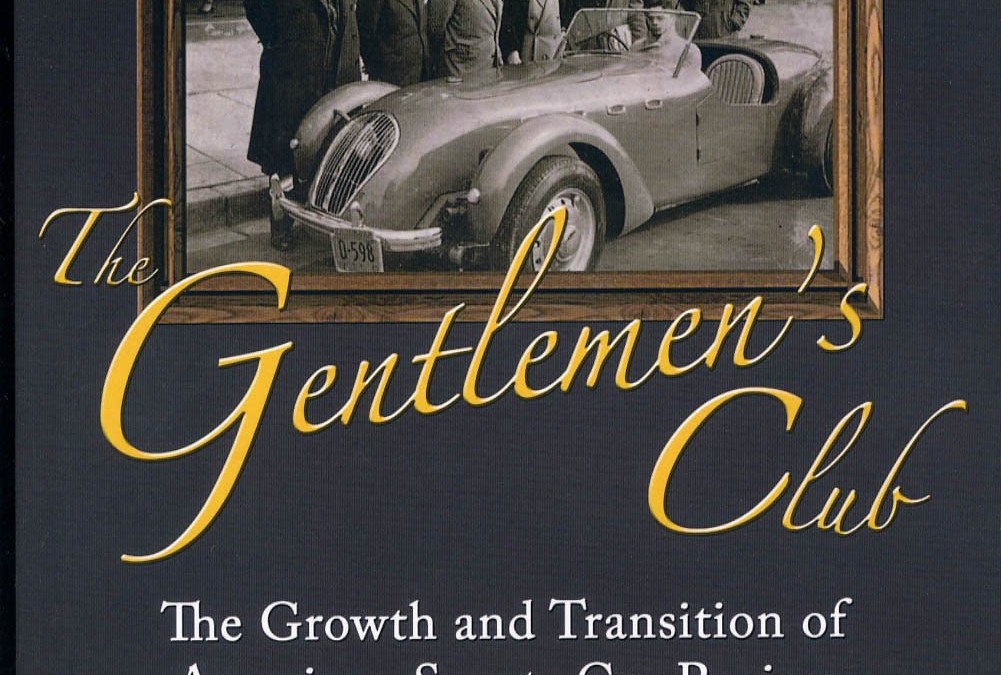
One fateful night in February….. Sounds like the beginning to a mystery. In fact, it was a February evening, in 1944, when seven well-heeled gentlemen met at a Boston estate. The gentlemen shared not only wealth and privilege, but also a love of driving and owning the specially engineered and built vehicles they called “sports cars”. The group elected officers, drafted a constitution, including strict membership rules designed to invite only their kind into the fold and gave their club a name. This was the rather staid beginning of the Sports Car Club of America. The club was formed more to promote the preservation and restoration of early sports cars than to host racing events. SCCA historian Pete Hylton recalls an interview with Ted Robertson, one of the original founders and its first president. Robertson, by his own words, had a different vision of what the club would become. “His focus when he wrote the draft of the club constitution and called together some of his similar minded friends for the first meeting was to create a club of ‘owners of elderly sports cars to insure their preservation’.” Ironically, the founding meeting of what would become an internationally recognized racing organization was marked with a significant lack of vision. According to Roberston, “On looking back to that faithful gathering of seven enthusiastic owners of early Americana on that Saturday evening on 26 February 1944, one fact stands out quite clearly,……we didn’t know what we were doing.”
Paperback: 160 pages

How fixing broken BMW’s made me whole
In Memoirs of a Hack Mechanic, Rob Siegel shares his secrets to buying, fixing, and driving cool cars without risking the kids’ tuition money or destroying his marriage. And that’s something to brag about considering the dozens of cars, including twenty-five BMW 2002s, that have passed through his garage over the past three decades.
A geophysicist by day and self-professed car junkie in his free time, Siegel explores his passion for cars with unflinching honesty and offers a unique window into the Car Guy mind. For over 25 years, Rob has written a monthly column called “The Hack Mechanic” for the BMW Car Club of America’s magazine Roundel. Along the way he reflects on the genesis of his fascination with boxy little German sedans, the miserable Triumph GT6+ he owned in college, rebuilding the engine of his wife’s VW bus in the kitchen of their first apartment, how cars affect family dynamics, and why men really love cars. And in showing how cars have repeatedly been the conduit for deep human connections in his life, Siegel reveals his controversial theory that beyond their greasy fingernails, gearheads are actually intimate, caring creatures. Siegel also explains why, in a world over which we have so little control, the act of diagnosing and painstakingly fixing broken cars can be immensely therapeutic. Just don’t ask him to fix other people’s cars!
With a steady dose of irreverent humor, Memoirs of a Hack Mechanic blends car stories, DIY advice, and cautionary tales in a way that will resonate with the car-obsessed (and the people who love them).

Ford’s 351 Cleveland was designed to be a ‘mid-sized’ V-8 engine, and was developed for higher performance use upon its launch in late 1969 for the 1970 models. This unique design proved itself under the hood of Ford’s Mustang, among other high performance cars. The Cleveland engine addressed the major shortcoming of the Windsor engines that preceded it, namely cylinder head air flow. The Windsor engines just couldn’t be built at the time to compete effectively with the strongest GM and Mopar small blocks offerings, and the Cleveland engine was the answer to that problem. Unfortunately, the Cleveland engine was introduced at the end of Detroit’s muscle car era, and the engine, in pure Cleveland form, was very short lived. It did continue on as a low compression passenger car and truck engine in the form of the 351M and 400M, which in their day, offered little in the way of excitement. Renewed enthusiasm in this engine has spawned an influx of top-quality new components that make building or modifying these engines affordable.
This new book reviews the history and variations of the 351 Cleveland and Ford’s related engines, the 351M and 400M. Basic dimensions and specifications of each engine, along with tips for identifying both design differences and casting number(s) are shown. In addition to this, each engine’s strong points and areas of concern are described in detail. Written with high performance in mind, both traditional power tricks and methods to increase efficiency of these specific engines are shared.
With the influx of aftermarket parts, especially excellent cylinder heads, the 351 Cleveland as well as the 351M and 400M cousins are now seen as great engines to build. This book will walk you through everything you need to know to build a great street or competition engine based in the 351 Cleveland platform.

A beautifully presented, two-volume collection, uniquely chronicling the story and history of the most recognizable aircraft of World War II and the pinup girls whose images graced these legendary warbirds. Flying into combat with our boys, inspiring and providing our U.S. soldiers with sweetly seductive reminders of home, these pinups are a reminder of the All American good life GIs were fighting for. For the first time, Michael Malak has merged classic 1940s style Hollywood photographs in black and white and sepia recreations for the vintage at heart, as well as full color HDR (High Dynamic Range) photographs for the modern art lover. This book takes the viewer through the history of these magnificent warbirds and the role they played in World War II, and provides detailed, factual information about each of them courtesy of the Yanks Air Museum, home of these exquisite warbirds. Several world renowned pinup artists of today, such as Greg Hildebrandt, have contributed their time and talent to take part in this project, providing original artwork for Wings of Angels in the tradition of legendary pinup artists Gil Elvgren and Alberto Vargas.



